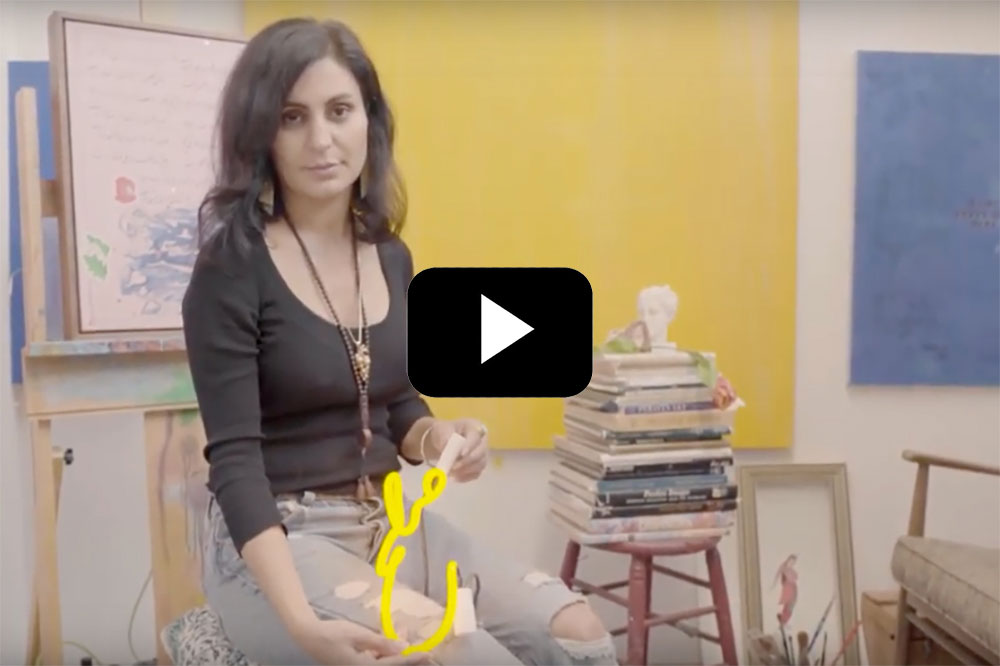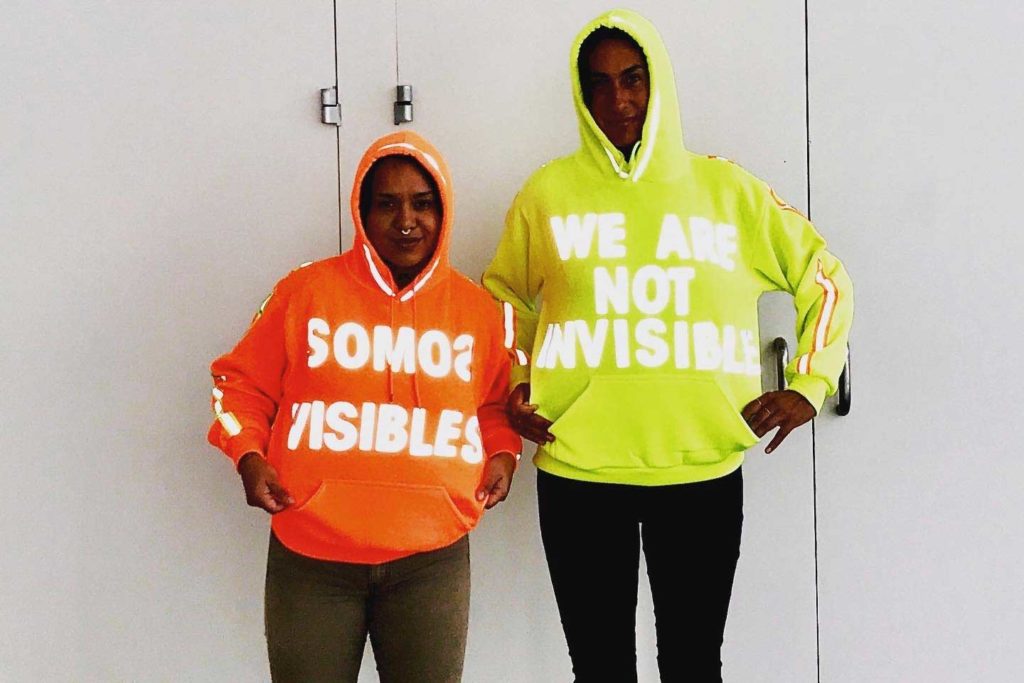Sat April 27th Open 11 AM–5 PM
PEACE IN THE MIDDLE EAST صلح with Taravat Talepasand
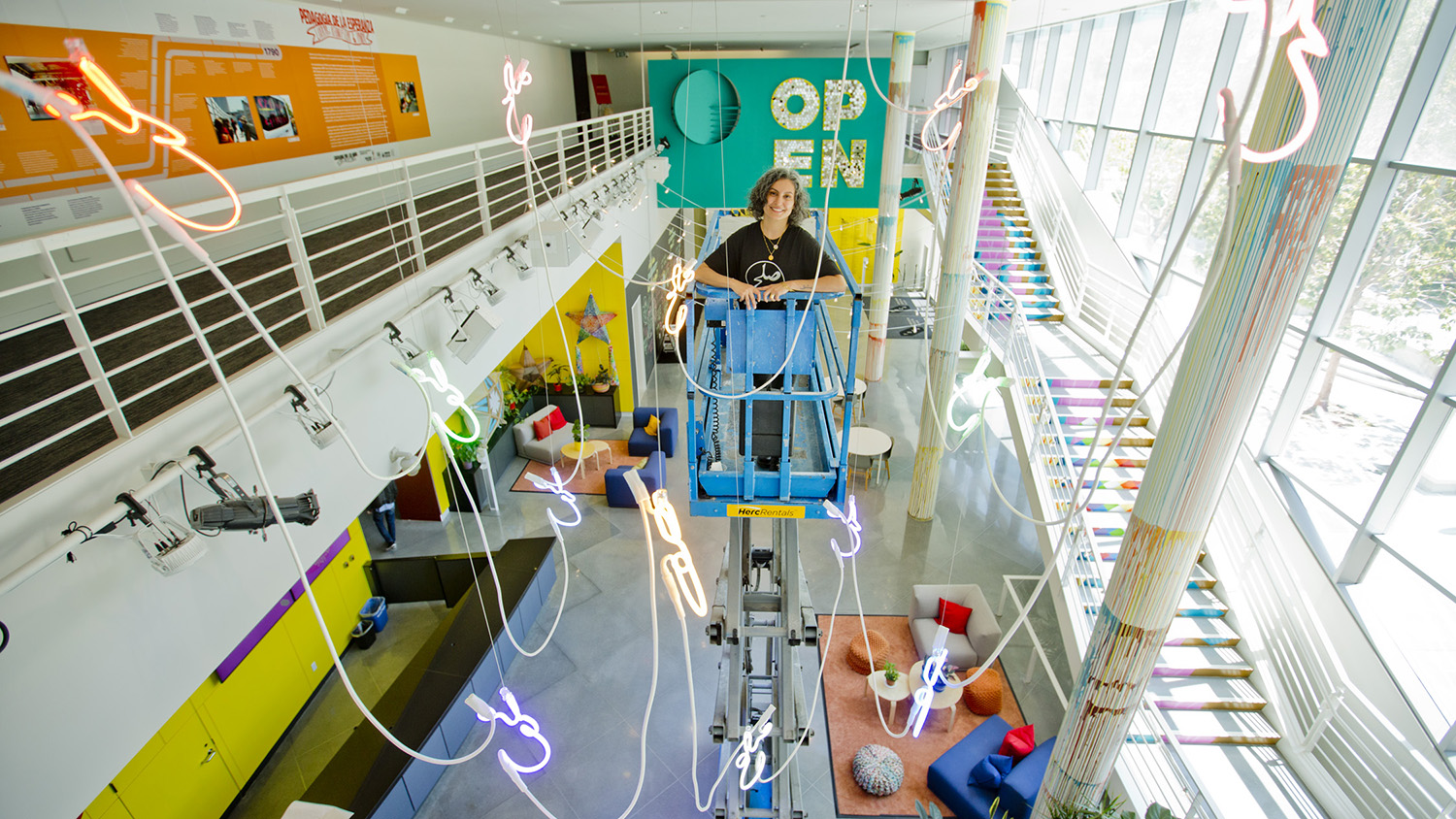
Taravat Talepasand is an artist, activist, and educator whose labor-intensive interdisciplinary painting practice questions normative cultural behaviors within contemporary power imbalances. As an Iranian-American woman, Talepasand explores the cultural taboos that reflect on gender and political authority. Her approach to figuration reflects the cross-pollination, or lack thereof, in our Western Society.
“To create art, it is imperative for me to be vulnerable—extracting the personal truths driven by my Diaspora, history, nostalgia, self-awareness, and rebellion. Much of my work revolves around the struggles of womanhood and navigating personal identity as a hyphenated individual. However, I believe that art must possess an element of vulnerability in order to provoke change—socially, intellectually, and morally. In a world where ideas of culture, political and intellectual activities are evolving, what will this change mean for generations to come?”
On May 23, 2022, Talepasand sat down with Fiona Ball, YBCA’s Manager of Curatorial Projects & Public Experience, to catch up on her work over the last several years and revisit Talepasand’s neon installation Peace in the Middle East (2017/2022) in YBCA’s Grand Lobby.
Fiona Ball: Taravat, YBCA hasn’t really seen you in the building since Bay Area Now 8, which feels like a lifetime ago in 2018. So, please tell us a little bit about what you’ve been up to over the last few years.
Taravat Talepasand: Shortly after the BAN8 opening, I got married, and moved to Oregon in 2019. While adjusting to my new life the COVID-19 pandemic imploded. Stranded at home, as most of us were, I started preparing my studio while allowing myself time to process the growing uncertainties. Sitting with yourself can be uncomfortable, but that discomfort allowed me to go inward, rewiring the parts of me that no longer serve who I am today. Being vulnerable is where I wanted to realign myself and that soft turn enabled a wider perspective for my new studio practice.
Grateful for the destruction 1 of my initial installation for BAN8 as it offered me a return to San Francisco and YBCA to reimagine my intentions about the installation in a more collaborative way. It was the response from the community at YBCA that really pulled at my heartstrings. Knowing that the community missed its presence and what they were seeing every day confirmed a different purpose—to create a rippling experience. This marks my first public art piece and hopefully not the last.
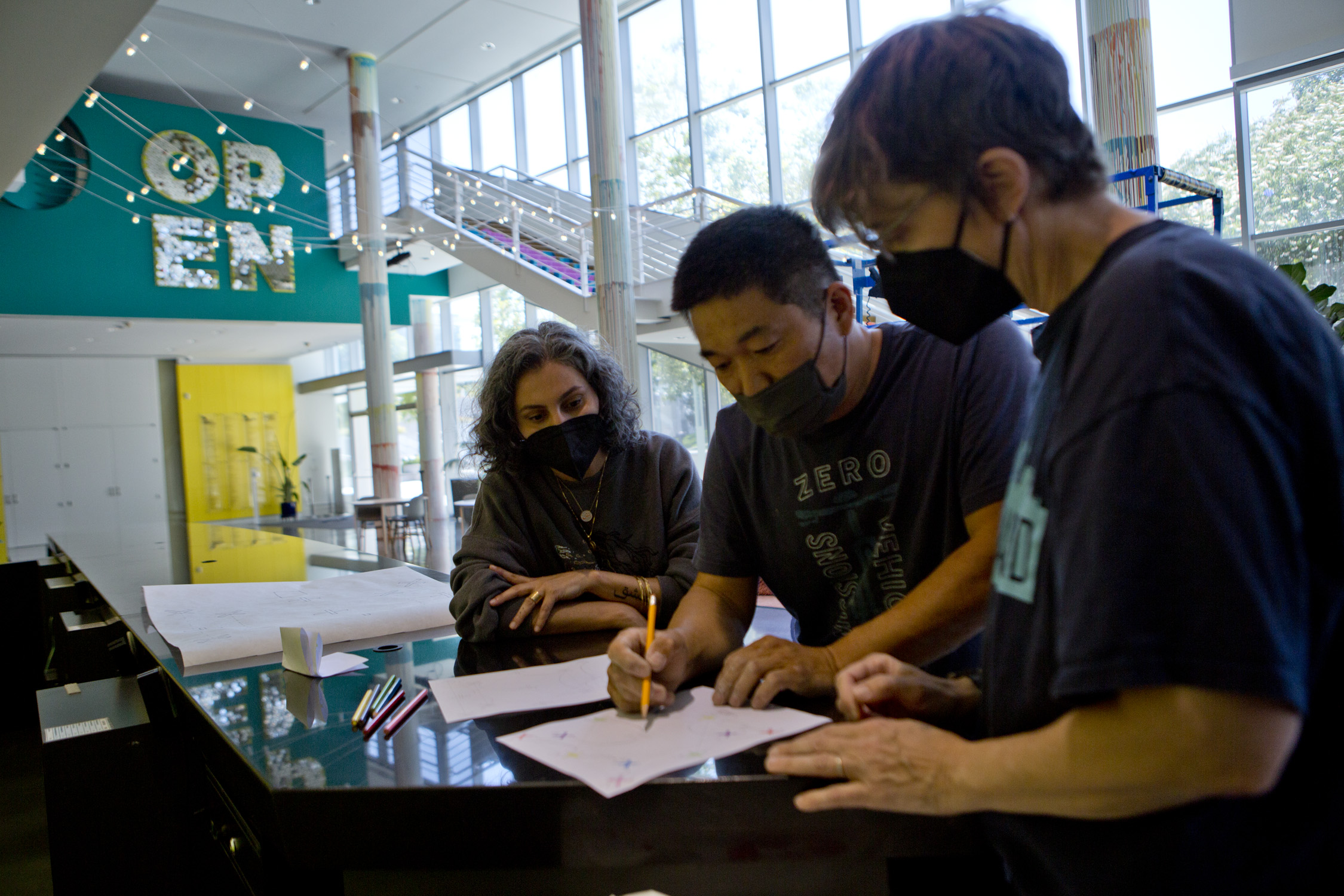
FB: Today, as we were installing the work, I had colleagues come up to me and be like, “It’s back!” It just grounds the space so well, and it really plays with the architecture and the colors that are already in here. Everyone that I’ve been talking to that has walked by is so elated that it has returned, which is such a good feeling.
TT: I love hearing how people experience the work and seeing the transformation of the new space. I’ve really enjoyed the interactions and conversations with everyone here. When we were all struck with serious uncertainties and tragedies, YBCA reimagined its future and position as an institution focusing on inclusivity, diversity, and equity for the community, artists, and their work. I’m excited to be in the company of Ana Teresa Fernández’s OPEN (2017) as it mirrors a meaning that reflects the light and colors from my neon installation. The feeling in this space is good, an experience we all deserve to feel.
FB: Absolutely. I feel like the work along with Ana’s really grounds the vibrant energy we are trying to cultivate in our lobby, the entry point for so many who come here.
You mentioned that you left the Bay Area for Oregon. How does it feel to be back after years?
TT: Returning after years of isolation and caution during the pandemic is an awesome feeling. San Francisco has a spirit and energy that if you have lived here, you know what I’m talking about. Visiting the people and places that have always moved me has instilled my relationships and nostalgia in the most positive ways.
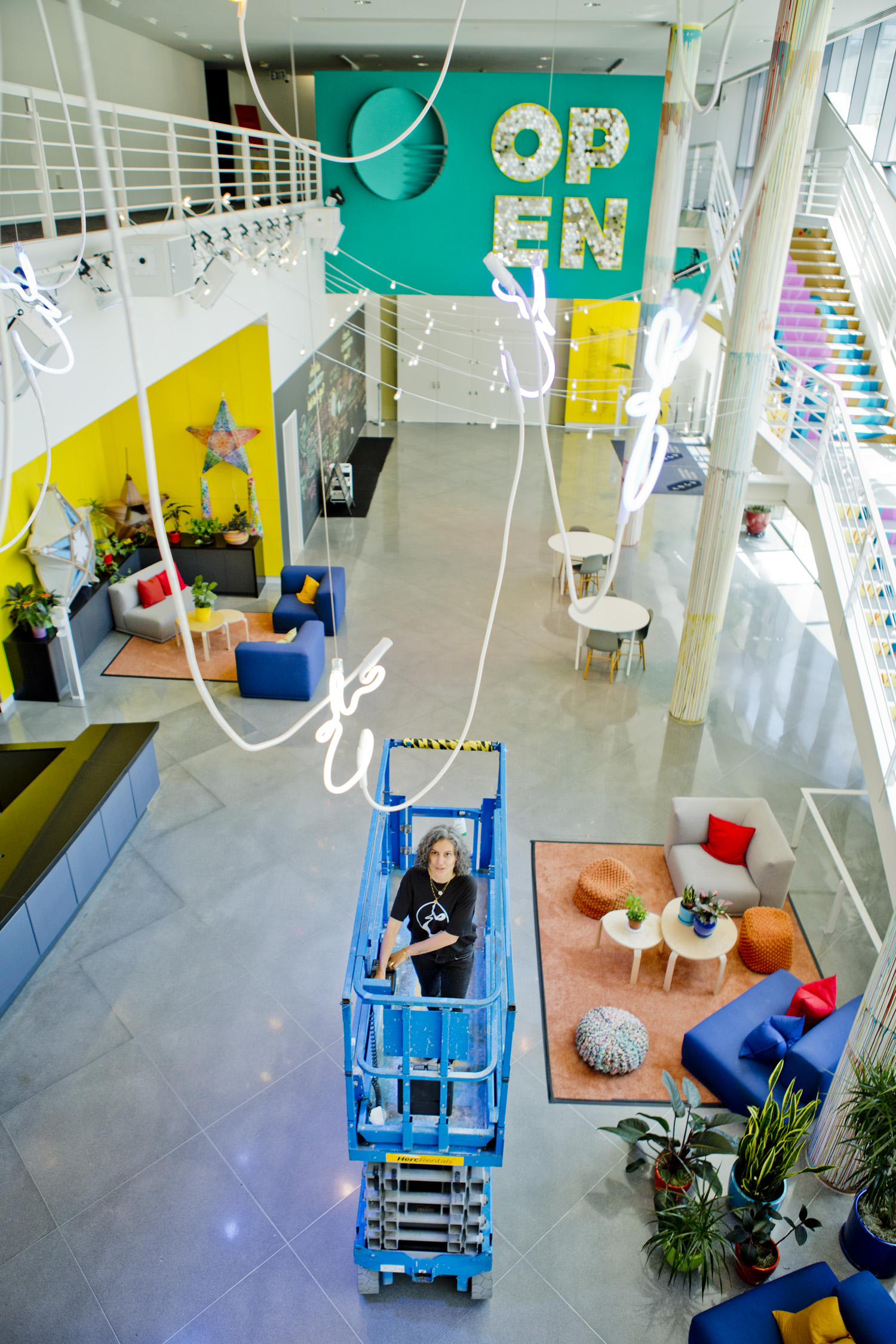
FB: When I first moved here and I was in my masters program at CCA, one of my professors, Dena Beard, told me it takes five years for the Bay to feel like home. But then once you’ve done your five, it will always be home. And I’m approaching my five years at this point. And I’m really starting to feel like I’m in that energy.
TT: Rooted.
FB: Yeah. It’s part of me now. Or I get to be part of it.
TT: It’s true that it takes five years to ground yourself in the Bay (I heart Dena Beard). I was told the same thing when I was a graduate student in the early 2000s. 15 years later, I decided to leave, and it was the right time given how exponentially high the market had become. I decided to return back to nature far from the droughts and fires.
FB: That’s real! You mentioned that you’ve had a chance, with this re-installation, to rethink what the artwork means to you. Can you tell me a little bit about where you started with it and where we’ve ended up now?
TT: The ongoing wars / proxy wars within the Middle East (MENA) have been all consuming my entire life. Born to Iranian parents, who were refugees during the 1979 revolution, instilled unsettling issues around the idea of peace. Conceptualizing Peace in the Middle East was a call for awareness of the conflict in Palestine, Yemen, Syria, Iraq, Lebanon, Pakistan—name a country in that region and I guarantee a history of fighting for peace or lack thereof.
I now imagine the purpose and meaning to be expanded. Language is power that we possess and plays an important part in this piece along with its other components. People may not recognize the language but its presence and gesture resonate for peace.
FB: And then why neon? What attracts you to that medium? Because so much of your work is also grounded in paint and illustration, but what draws you to neon?
TT: First and foremost the light itself. Peace in Farsi sounds like sol, which in Spanish sol is defined as the sun. The sun is vital for all living things and our human existence. Illuminating the word peace in neon is a way to radiate the word and its meaning.
FB: Again, thinking about that sol interplay.
TT: It’s the sol! My memories of time spent in Iran involved radiating colors of neon found everywhere; shops, weddings, funerals, birthdays, etcetera. I anticipated using neon for a long time, but waited until the right idea presented itself. When I met Ames Palms of Rebel Neon, we collaborated together and made it happen in the most beautiful and organic way. As a studio artist you work independently most of the time, but when you collaborate, fabricate, and work in teams, there is a reciprocity and that motivated me and my practice.
FB: Yeah. When I first saw it finally installed, the first word that came to me was drapery.
TT: Peace hanging by a thread…
FB: The way that we’ve installed it this time around, you definitely feel the weight of it in our very tall lobby ceiling. It feels very intentional, but also organic.
TT: Part of reimagining the installation within the lobby of YBCA allowed me to reconsider its context. The weight of the electrical cord is intentional for both form and function; each neon must share the cord to transfer the electrical charge in order to light up. The interconnectedness or ebb and flow speaks deeply about the idea of peace.
I used sacred geometry for the configuration of this new installation; a square within a square of eight points found in architecture and tiles spanning from Northern Africa and the Middle East. There is more intentionality behind this installation and the many ways it can be viewed. It’s great to come back to it and have more structure, more meaning.
FB: I’d love to demystify the fabrication process. Tell me about the process with Ames and Rebel Neon. How did you get connected? How did you work together? And what was that process like?
TT: I met Ames back in 2015 and we’ve kept a close relationship ever since. We have a great working relationship that quickly became a friendship. Now with their own studio, Rebel Neon, I seek to support their practice in collaboration with mine.
Ames has a spirit and attention to detail that I connected with right away. They bend light in a similar way that I paint and draw, so the respect is mutual. Collaboration is important as it helps me process the many possibilities of one idea with someone else. I choose to work with Ames for all my neon needs. Not only for their generous talent, but respect for their diversity and inclusivity within the community. I enjoy working with others and choose to not always do it alone. The fabrication process is an exchange, an even trade. The reciprocity gives a deeper meaning within the work itself.
FB: It would be great to learn all those skills, but then you lose that collaboration that has been so rich for your practice over the last several years. The relationship matters to the process. So what are you working on next?
TT: Allowing myself the space to play and be vulnerable in my studio practice. Refocusing on various approaches to painting and drawing. Leaning into creating new work that seeks to look beyond the dogmas carried within.
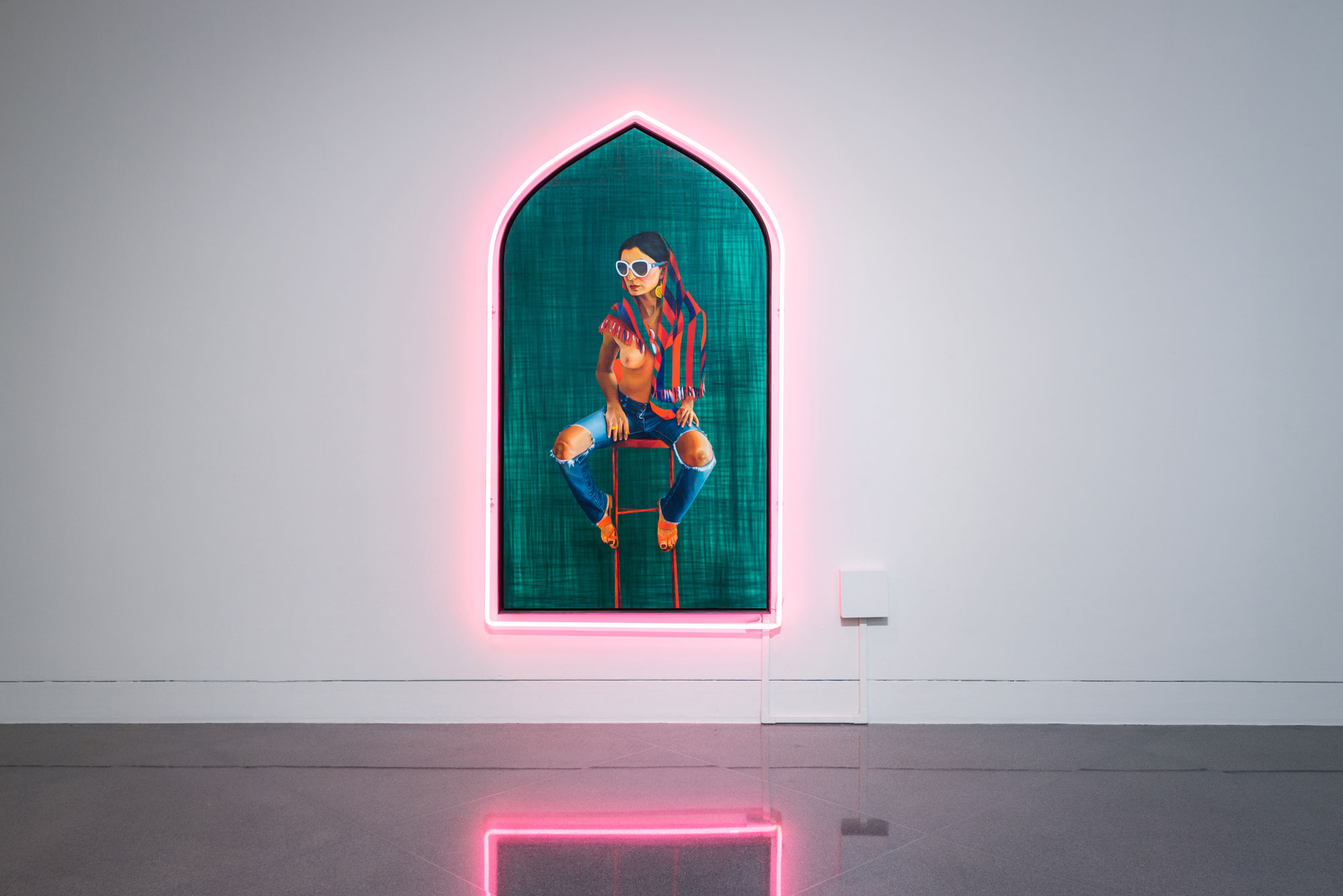
FB: I was revisiting your work from BAN8 and there was also a lot of very recognizable imagery from meme culture, social media, politics. And it’s not subtle in an intentional way. It’s really like you recognize these icons, you understand how it all connects and this creates this universal understanding. It sounds like you’re searching for the next version of that. You’re looking for what are the commonalities within these stories that can appear in your paintings however you see in the next iteration.
TT: I decided on a soft turn away from all that. To be honest, I got tired of the political and the popular culture of fear stoking, misinformation, and never feeling enough. I feel numb to technology and turning away from whatever data it collects and serves back to me… The exponential growth of ALL THE THINGS is failing. Waking up isn’t easy. So, I challenged myself to go inward, to be patient in processing this new way of seeing and being; both in my daily life and studio practice. I want to create from a place of thoughtful energy. Being more considerate with my artistic practice and the narratives that I’m realigning myself with. This is an exciting place for me to create again, an evolving feeling that I welcome to be practiced.
FB: Just like you were saying with politics, we’re overloaded with this content and there’s got to be something else that we can explore.
TT: Presence has been my biggest challenge and I want to create from a place that offers one to pause and reflect. There is an abundance of information that we are constantly trying to absorb and I am mindful of the space that my work takes up. Is there a way for me to present the many layers of our logical and emotional state of being into a painting? Not sure, challenge accepted.
FB: I am so happy your work is back at YBCA. Is there anything else you want to say before we wrap up?
TT: Thank you to the YBCA team for giving me the support and space to share my peace with the community. In gratitude to have my work available for anyone and everyone to view—offer an experience in the city that has been a huge part of my growth as an artist, activist, and educator. Peace out.
